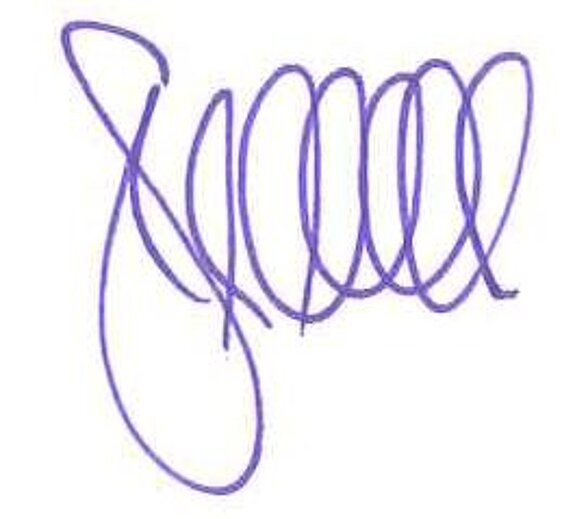On a knife's edge - or, what virtual models can never teach you

After the world around us swoons in the face of a virus and even my beloved weekly skat round is canceled because our restaurant is closed from 6 pm, I would like to take you into a slightly different world, which unfortunately comes far too short on the computer.
I gave my son Julian for his birthday a joint knifemaking course, in which we both participated about 2 weeks ago.
In my youth, when the weapons laws were not yet so strict, I have tried more or less well at the production of throwing axes, throwing stars and throwing knives and suffered there nevertheless the one or other shipwreck. For example, the tips of my throwing stars always broke off, even though I was so proud of my hardening process (wood stove grill and water bucket).
So what better way than to have an expert, in this case Frithjof Güttler from Albeck, show you how to make knives and then try your hand at it yourself.
If already a self-made knife, then from Damascus steel, of which I was mistakenly of the opinion that it becomes particularly hard and sharp by the many folds of the steel during forging. Far from it, the whole thing has only the purpose to look good afterwards - and it does indeed. Otherwise, the strength, sharpness and hardness is comparable to a plain knife steel.
So how is Damascus steel made today? In Japan by treatment with plant juices, in our country by combining different materials.
So what have we done?
On the first day, a blank is forged from a bundle of sheets with several alternating layers of a tool steel (1.2842), which gives the dark component, and a nickel steel (1.5663) for the light component. The blank is repeatedly annealed, split, folded, annealed and then stretched again with a hammer and a press.
Puff pastry is made the same way, I've been told, only the oven, the hammer and the anvil are omitted.
The furnace with the forge fire is powered by two gas cylinders and has a power of 18 kW. The gas is introduced tangentially in the middle of the tube. Through milled channels in the tube, the flame is directed so that it is reflected at the ends and heats the interior evenly, without giving a spur flame forward when opened.
The following video shows the flame guidance in the furnace.
Video player
The belt grinder is then used to shape the blank and, after heat treatment in an electric muffle furnace with precise temperature control, it is hardened at 820 °C by quenching in grease.
Grease because then the material does not become too brittle and there is a good compromise between hardness and toughness. My throwing stars send their regards ...
Tempering takes place immediately after hardening in a conventional oven at temperatures around 200°C.
The most time-consuming work is the surface finish: the cutting edge is ground smooth on both sides by hand using a grindstone with sufficient oil until no grooves are visible.
The contours of the pattern on the knife can already be guessed quite easily now, but really come into their own for the first time after etching with iron3chloride.
The production of the handle from wood is comparatively unspectacular. It is glued into the wooden bore with a two-component resin. Then, after curing, the handle is brought into the right shape with a belt sander and then by hand with sandpaper.
Now the knife is sharpened with various grinding stones of different grits. It is important here that approximately the same angle is always maintained when grinding.
The test with the thumbnail shows even the smallest unevenness in the grind. Here, the cutting edge is guided very lightly over the thumbnail. You should not press too hard or you will end up with a split thumb. ????
The paper test at the end shows if the knife is really sharp or if it still picks in some places.
You can see how to sharpen a knife properly in the video.
When you strike a Japanese sword and a European sword against each other, one always breaks, and it's not always just the European one ...
- I don't have a single really sharp knife at home. But that's going to change now.
- Knives don't belong in the dishwasher if you're too stupid to sharpen them. Otherwise, you can but already ...
- I had no idea about grinding until now.
- Practical intelligence is when you can build a working furnace without studying fluid mechanics.
- You get a completely different feeling about a material when you forge, harden and grind it than when it is just a number in a table of which you know the stress-strain curve.
- Never push the vegetable to the side after slicing with the edge on the board, but turn the knife over and put the back on. Otherwise, some professionals won't sell you expensive knives.
- You could also make throwing axes out of Damascus steel, and ones where the handle doesn't break after 5 throws ...
So far I haven't dared to use my knife in the kitchen, but I will.
We would not like to miss the 2 ½ days that took us out of our daily routine.
Many thanks to you, Freddie. It was a lot of fun. I'll be coming to your house soon with a load of dull kitchen knives.
I hope you had some fun reading this.
Hang in there! Every crisis is always an opportunity!
Your Stefan Merkle

PS: Of course, we can also mathematically reproduce your forging process, but without damascus steel. But that's just optics anyway. And with the furnace, you don't have to empirically test whether the flame strikes after you. ????



![The proud owner [Translate to English:] Der stolze Besitzer](/fileadmin/_processed_/a/d/csm_MeinMesser-768x1024_feb8e322c7.jpeg)